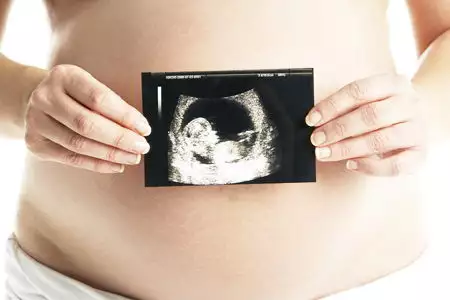Intrauterine growth restriction (IUGR) was introduced in 1961 and refers to a foetus that has failed to fulfil its potential during its foetal life.
IV ENVIRONMENTAL FACTORS
(a) low sociometric status of the mother
(b) poor maternal nutrition
(c) addictions
- nicotinism
- alcoholism
- opiates
- cocaine
- amphetamines
There are3 phases of fetal cellular development (according to Winick):
- up to the 16th week of gestation, fetal growth occurs mainly by cellular hyperplasia (proliferation);
- from the 17th to the 31st week of pregnancy this is a period of hypertrophy as well as hyperplasia of the fetal cells;
- after the 31st week of gestation, a phase of cellular hypertrophy involving an increase in cell volume predominates.

photo ojoimages
Intrauterine fetal growth restriction is divided into:
- Symmetrical type - occurs in about 25% of cases and is characterised by early onset. Fetuses have smaller abdominal and head circumferences and long bone dimensions, Most commonly associated with chromosomal abnormalities, genetic defects, inborn errors of metabolism, intrauterine infections.
- Asymmetric type - is diagnosed in the second half of pregnancy. Clinically, a low birth weight with relatively normal head circumference and body length is found. The newborn has a characteristic appearance- disproportionately large head, sunken abdomen, lack of adipose tissue and long and skinny limbs.
The primary method for assessing fetal growth is diagnostic ultrasound. An accurate assessment of gestational age and delivery date plays an overriding role. In the second and third trimester, the rate of growth is measured by serial measurements of head circumference, tummy circumference and femur length.
Currently, there are no known strategies for the prevention of IUGR. Placental circulation can be improved by supplementing nutritional deficiencies and a high-energy diet. High hopes are also placed on growth hormone therapy.









